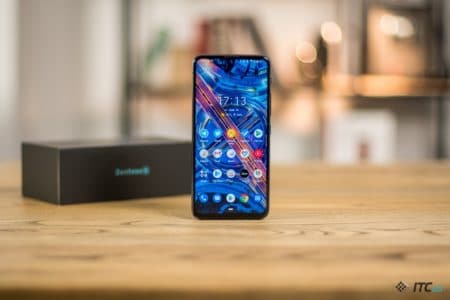
After releasing the successful ZenFone 5 and 5z models last year, ASUS decided not to stop there with the introduction of the new flagship smartphone ZenFone 6 (ZS630KL). And it is fundamentally different from last year’s top-end devices from the manufacturer. It no longer has a cutout in the screen, the main camera unit rotates from the back to the front, the software has been completely redesigned, and the battery capacity is now 5000 mAh. Let’s see how this all works in practice.
Message from the editor: Our defenders from the 115th brigade, which is now fighting in the east, need a pickup truck . Details for transferring funds to a monobank card – Polyanskaya Karine Sergeevna, card number 5375414101372265. We ask you to take part in the fundraising.
Glory to Ukraine!
Contents of delivery
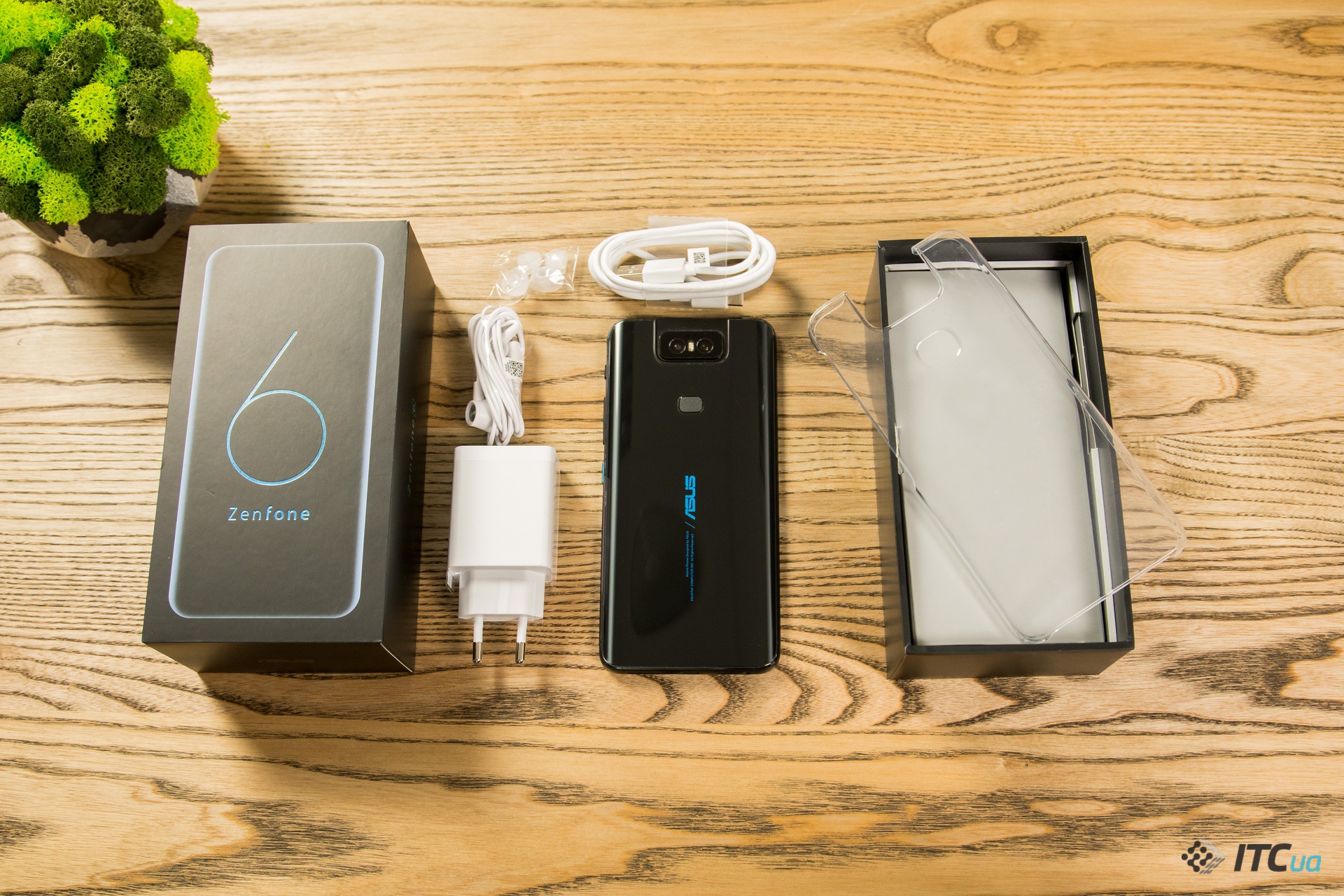
In the box with ZenFone 6 comes a charger, a USB Type-C cable, a headset with a set of ear pads of different sizes and support for DTS Headphone XTM 7.1 technology, and a simple plastic case.
ZenFone 6 camera design, materials and construction
In the past year, manufacturers have massively used cutouts in screens to reduce the bezels around them. In the same year, interesting engineering solutions are increasingly encountered that allow you to get rid of cutouts, but at the same time do not give up thin frames and a front camera.
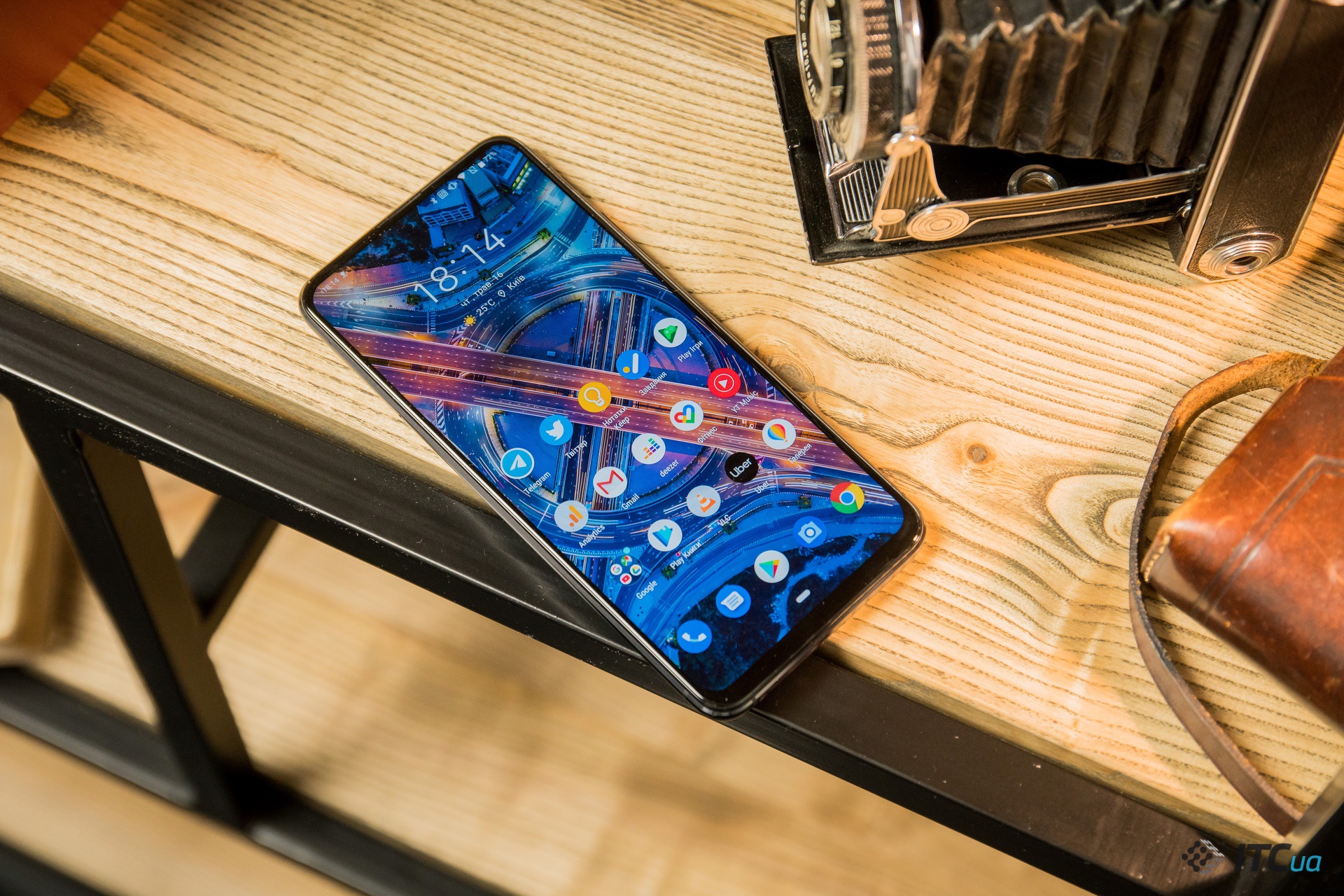
ASUS generally followed the new trend, 92% of the front panel of ZenFone 6 is occupied by a 6.4-inch display covered with Gorilla Glass 6 protective glass, which is only slightly rounded at the edges, smoothly turning into the metal edges of the case. The lower frame is larger than the upper and side ones, but visually it is not very striking. Due to the lack of inscriptions, the front of the smartphone looks clean and concise.
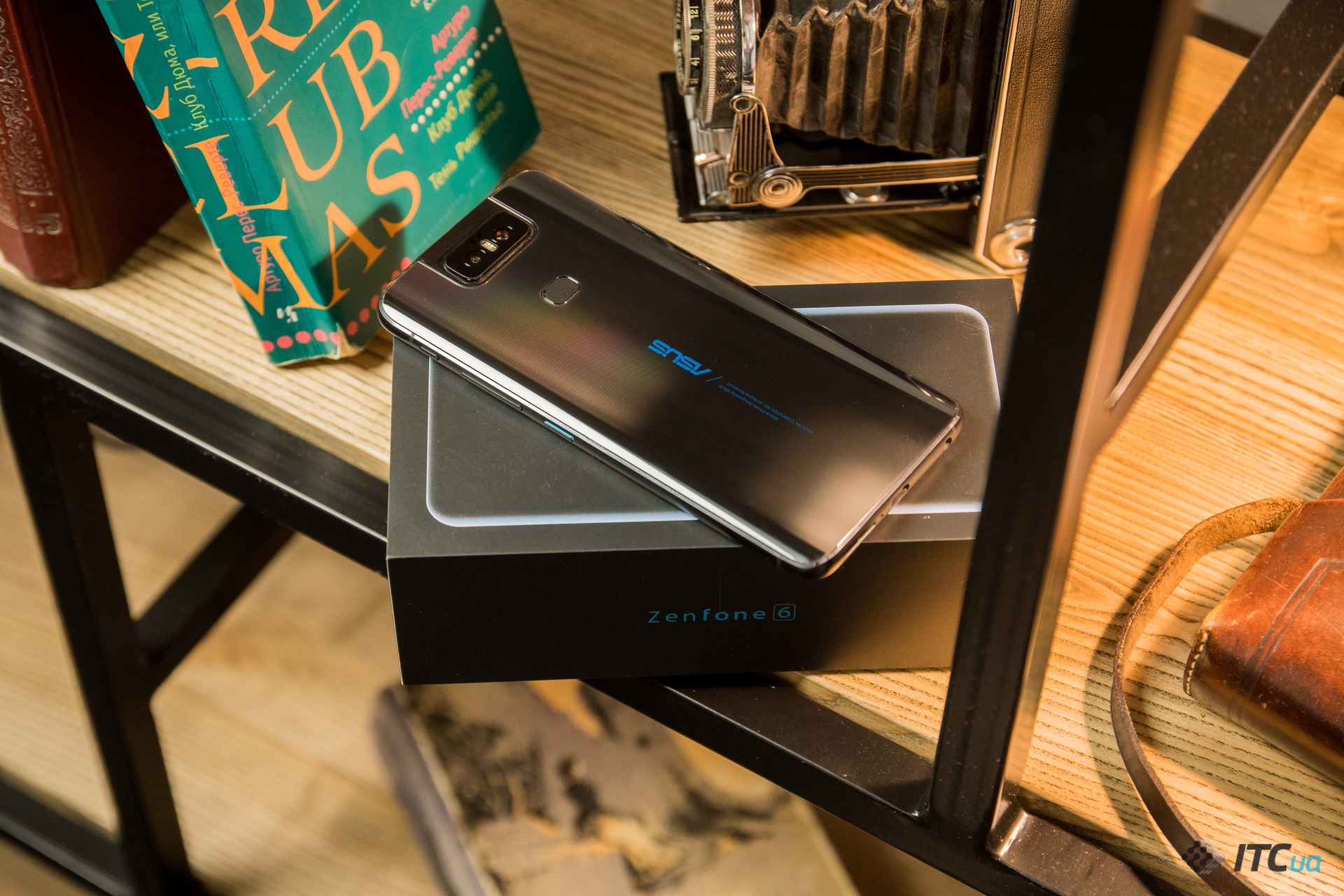
On the back of the ZenFone 6, an unusual dual-camera array immediately catches the eye, which is located closer to the upper edge of the case and stands out not only in appearance, but also in material. The fact is that the entire back cover of the smartphone is made of glass, rounded on the sides, but the camera unit is made of metal. Moreover, ASUS used in it the metal of the same name from Liquidmetal Technologies, a very light but durable alloy.
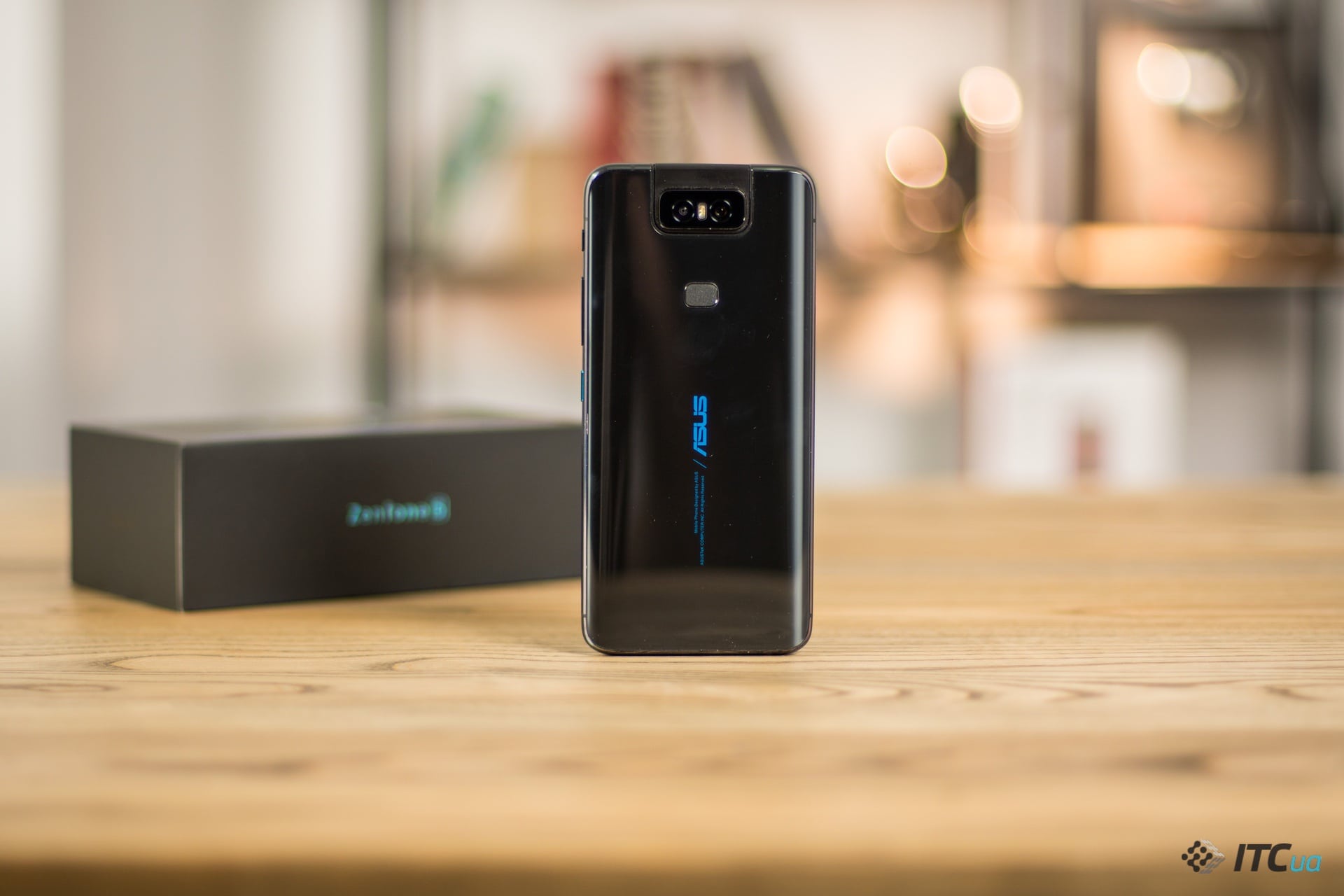
Below the cameras is a compact fingerprint scanner, and below it is a vertically applied ASUS logo and service inscriptions.
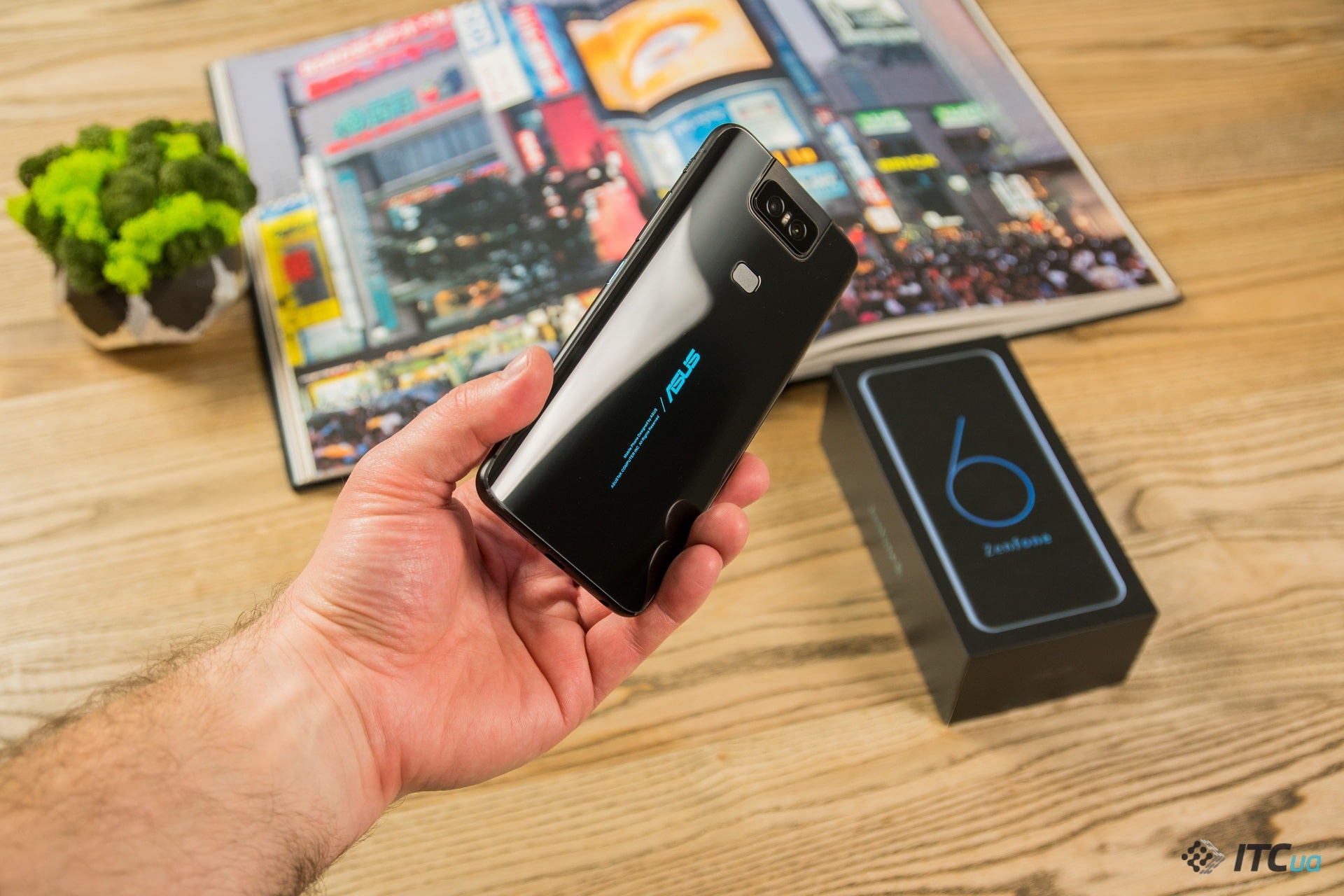
ASUS calls its camera Flip Camera and it really turns or even turns over from the back of the case to the front.
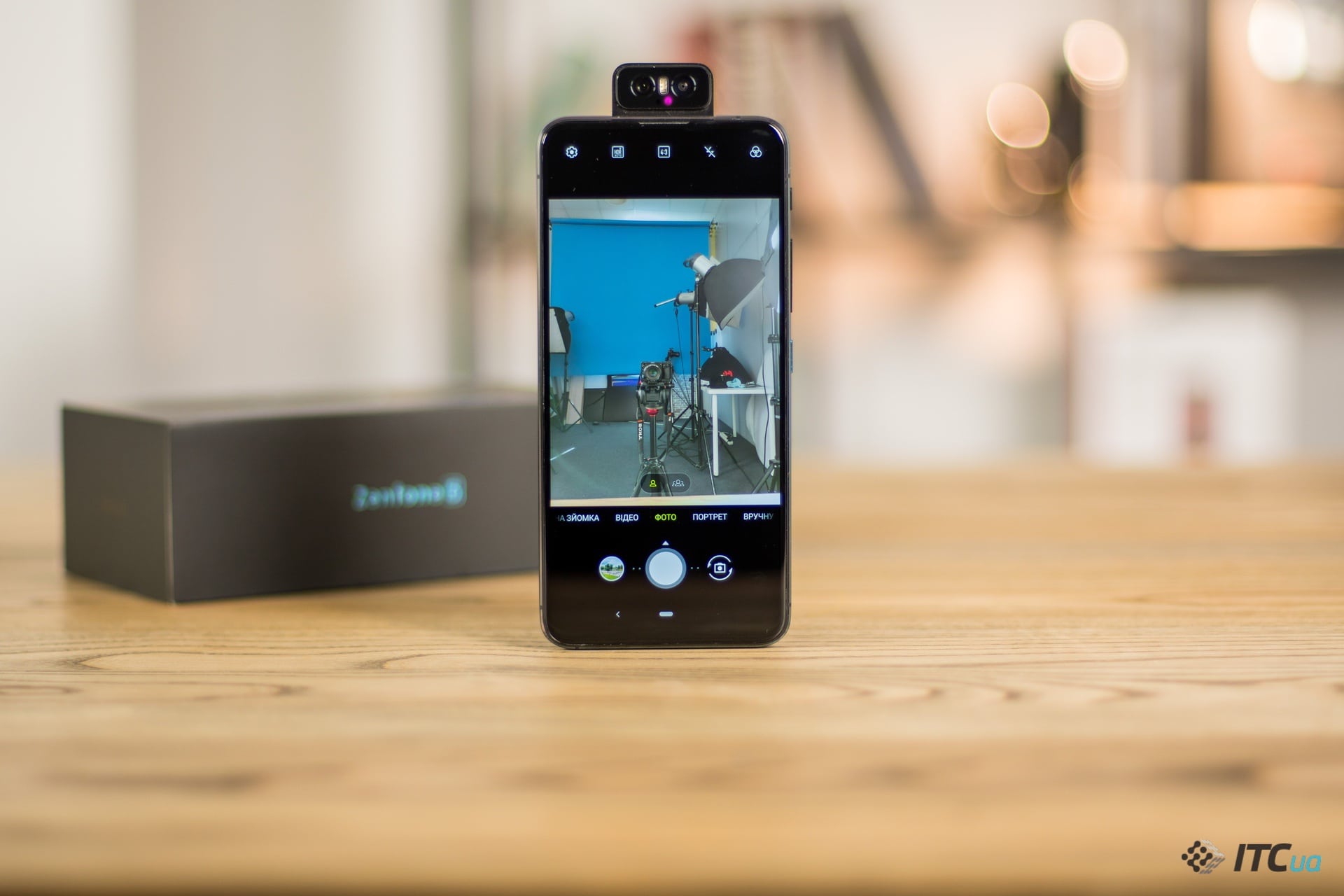
This is implemented due to a motorized mechanism that raises the camera block above the upper edge of the case. At the same time, this feature works not only in the camera application, but also in some third-party programs, for example, in Google Lens. Moreover, in the latter, you can generally manually adjust the rotation of the camera, stopping it at intermediate values.
As mentioned above, the camera block is made of Liquidmetal, specifically to make it lighter and reduce the load on the motor. However, it is difficult to say how reliable this mechanism will be, but only time can tell. In my case, there were no problems with the operation of the rotary camera unit.
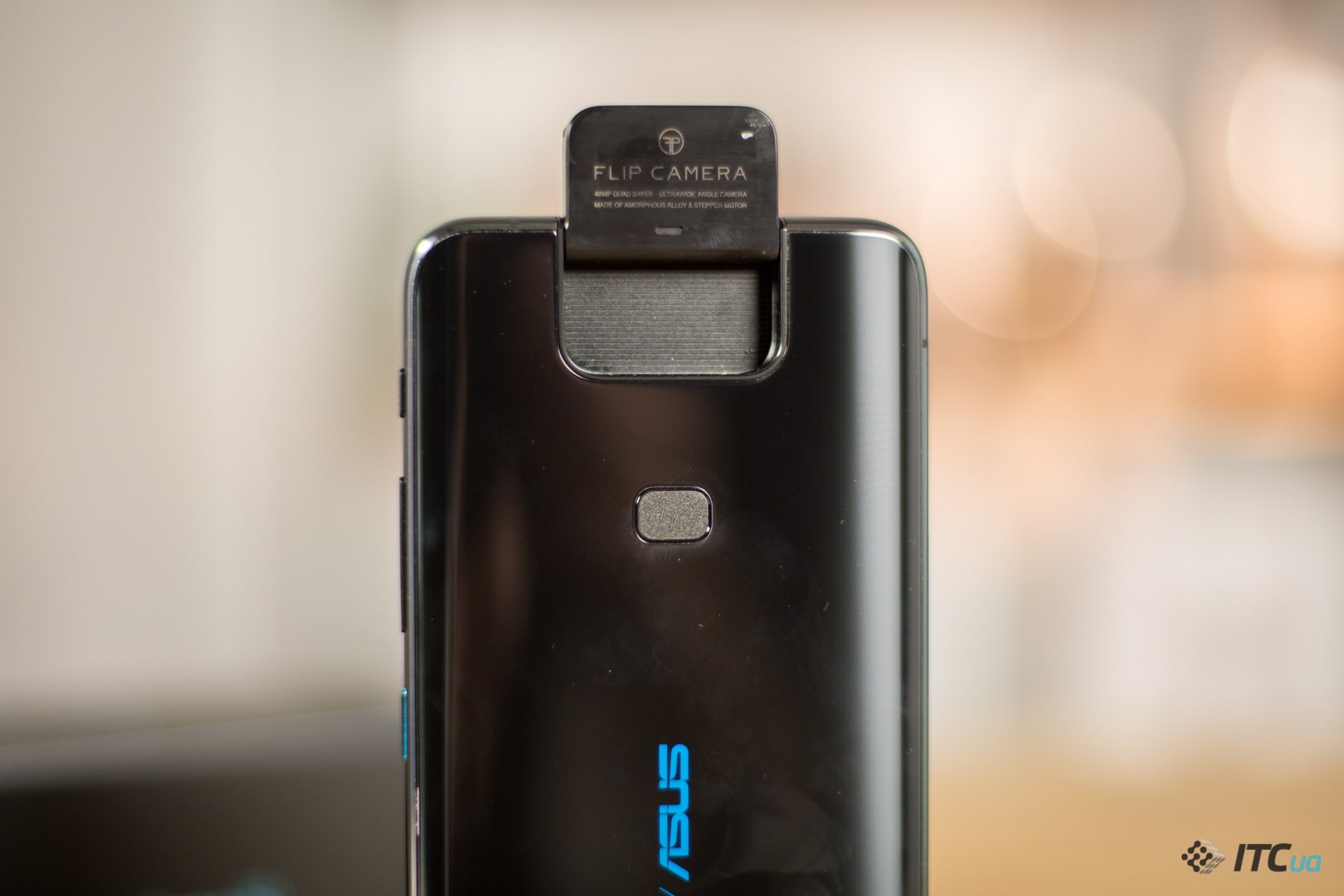
At the same time, ASUS claims that it can withstand 100 thousand movements, which is equal to the creation of 28 selfies a day for five years. The mechanism itself is implemented quite thoughtfully: when a free fall is registered by the accelerometer, it quickly returns the camera to the back of the case. In addition, it can be closed manually without any problems, this does not affect the operation of the mechanism.
The increased display diagonal and capacious battery could not but affect the size of ZenFone 6. The device has become larger and heavier than its predecessor. Its dimensions are 159.1 x 75.44 x 9.2 mm and the weight is 190 grams.
At the same time, like last year’s ASUS flagship, the ZenFone 6 case does not have protection against water and dust.
The fingerprint scanner
Looking at the ZenFone 6 makes you want to put your finger on the display to unlock it, but ASUS decided to use a capacitive fingerprint scanner, placing it on the back of the case.
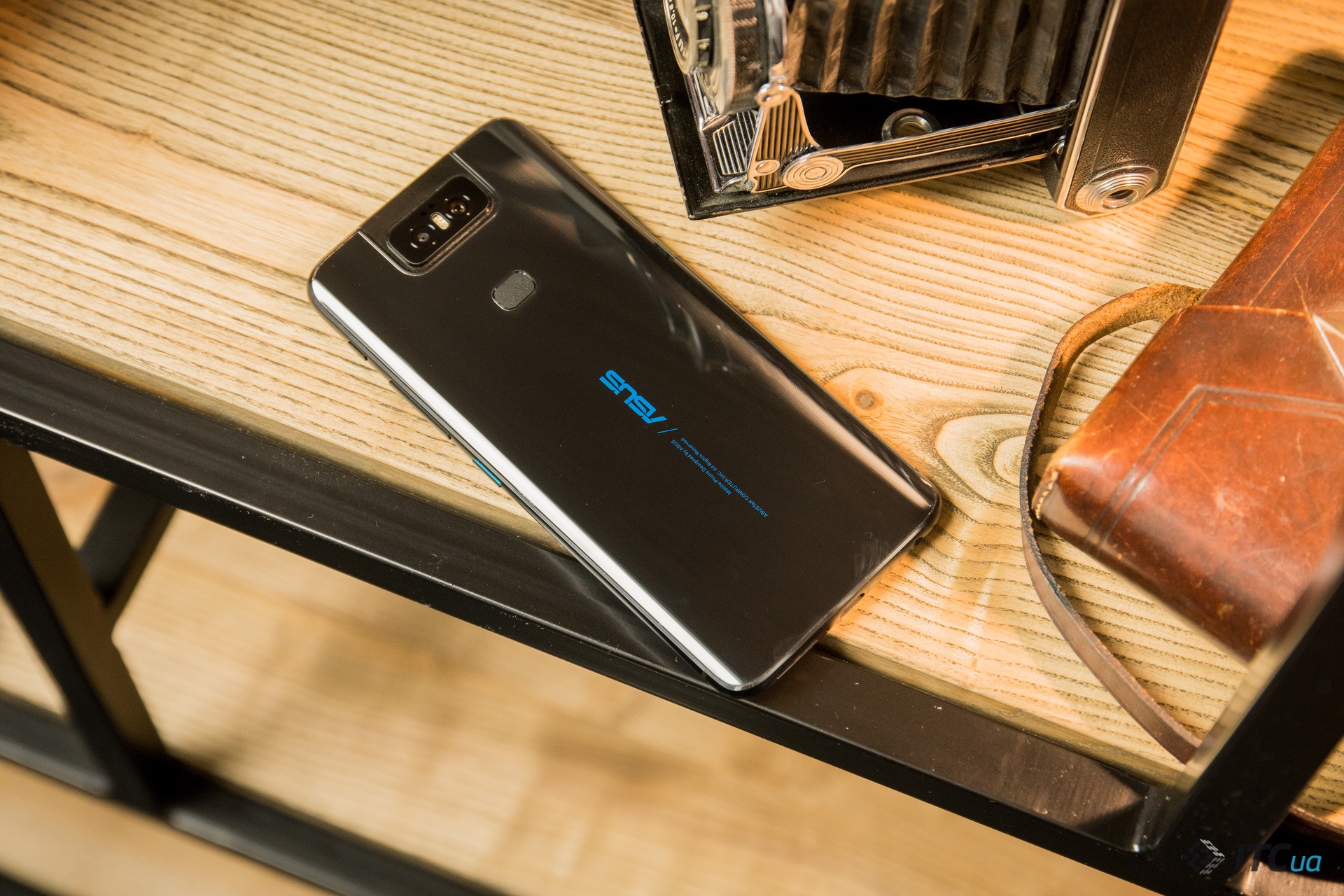
As mentioned above, the scanner itself is not very large in size, but it works well and quickly, allowing you to add up to 5 fingerprints.
Display
The 6.4-inch ZenFone 6 display uses an IPS matrix with a resolution of 2340 × 1080 pixels, DCI-P3 color space display, and 600 nits of brightness.
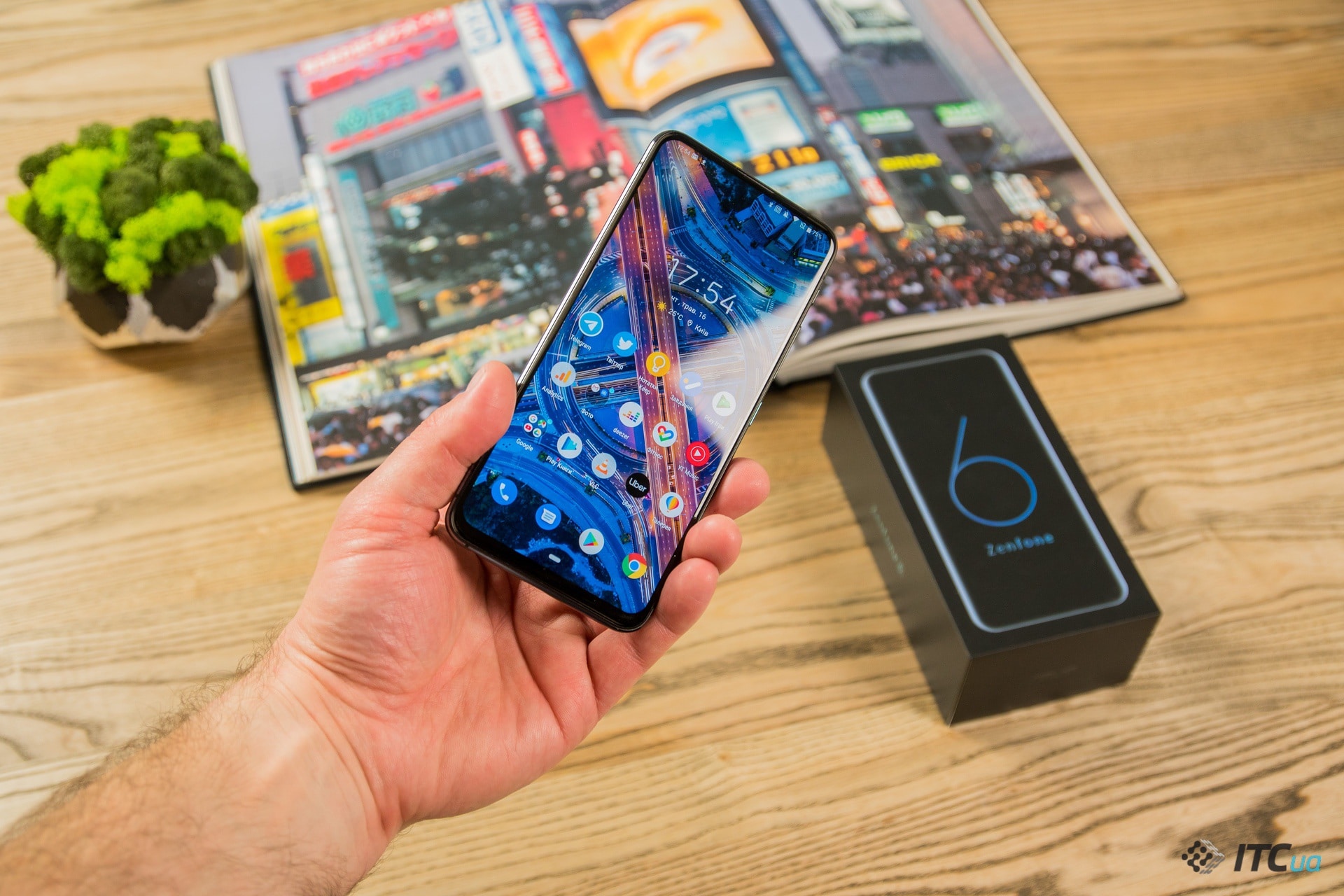
In the screen settings, you can change the color display mode by choosing a more natural color reproduction, as well as change the color temperature to a more “warm” one.
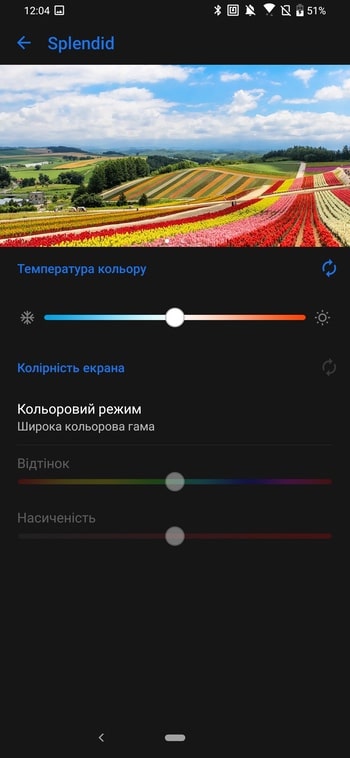

According to our measurements in “Standard” mode, the smartphone’s display provides a color gamut slightly larger than the standard sRGB triangle, a slight green bias, a color temperature of 7000K, a reference gamma of 2.2, and even backlighting.
In “Wide” mode, the screen becomes more colorful, its color gamut is wider than 100% sRGB, but other indicators are about the same as in “Standard” mode.
In general, the screen quality and factory calibration in the ZenFone 6 are at a good level.
Platform and speed
ZenFone 6 is based on the Qualcomm platform with the flagship Snapdragon 855 processor, operating at a frequency of 1.79-2.84 GHz, depending on the load, as well as Adreno 640 graphics. The test version of the smartphone also had 8 GB of RAM and 256 GB of internal memory. . The latter can be expanded using microSD cards, while to the delight of the owners of two phone numbers, the slot in the ZenFone 6 is not a hybrid one and allows you to install two nanoSIMs and a memory card.
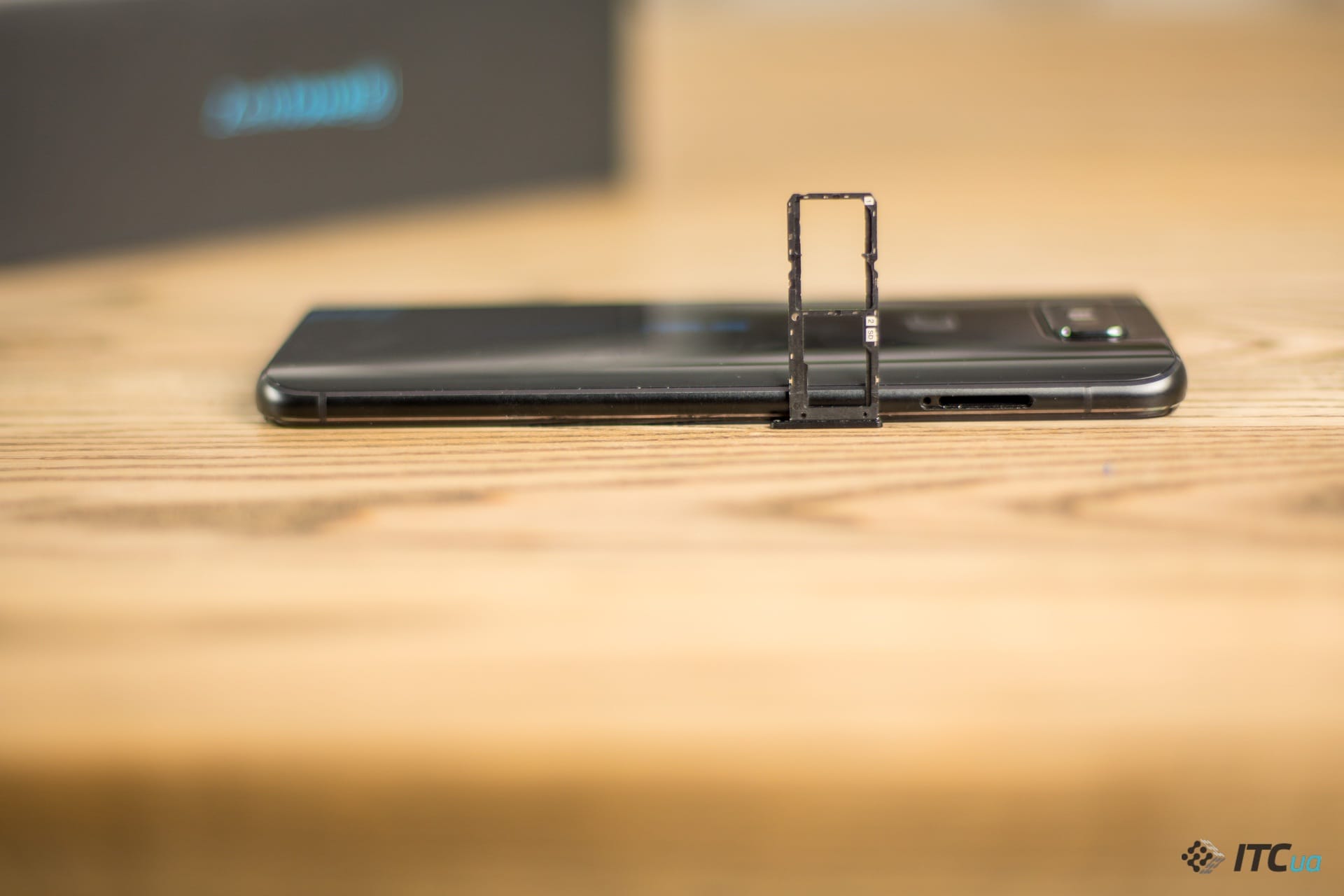
In total, there will be three models in the ZenFone 6 lineup, the base one with 6 GB of RAM and 64 GB of internal memory, the average one, such as the test one, with 8/256 GB, and the top one with 12/512 GB.
As expected, with such hardware, the performance of the smartphone is at a very high level. It handles the most demanding games and applications without any problems, and with a good margin.
Other features of the ZenFone 6 platform include dual-band Wi-Fi b/g/n/ac, Bluetooth 5.0, NFC, GPS positioning modules, QZSS, GLONASS, SBAS, Beidou and Galileo. The sensors are represented by an accelerometer, a gyroscope, an electronic compass, a Hall sensor, as well as proximity and lighting sensors.
Interface and control
ZenFone 6 is based on the Android 9 operating system and formally uses the ZenUI shell. But the latter practically does not change the interface, expanding the capabilities of standard Android for the better. From the first glance, the user may not guess that he is using the ZenUI shell.
Here, the user has access to desktops and a separate application menu, which is called up by swiping from the bottom up of the screen. And if you pull the screen from top to bottom, a curtain will appear with notifications and quick settings, including brightness control.
System applications are also mostly standard for Android 9: Chrome browser, Gmail mail, Google calendar, messages and so on. Gallery, contacts, file manager, weather forecast, calculator are available from ZenUI programs.
Additional features of the ASUS shell are represented by a mobile manager that helps to monitor the state of the smartphone and clean its RAM and permanent memory, the option to optimize battery performance, “accelerate” applications by preloading them and keeping them in memory. In addition, ZenUI has the ability to clone applications of some instant messengers, social networks and YouTube. This is convenient when the smartphone uses two numbers with an Internet connection.
To navigate the system, you can use the standard virtual keys at the bottom of the screen, or switch to gesture control, which appeared in Android 9.

All physical control buttons in the smartphone are placed on the right side of the case, here is the power key, volume control, and an additional key, which by default is assigned to call the Google voice assistant.
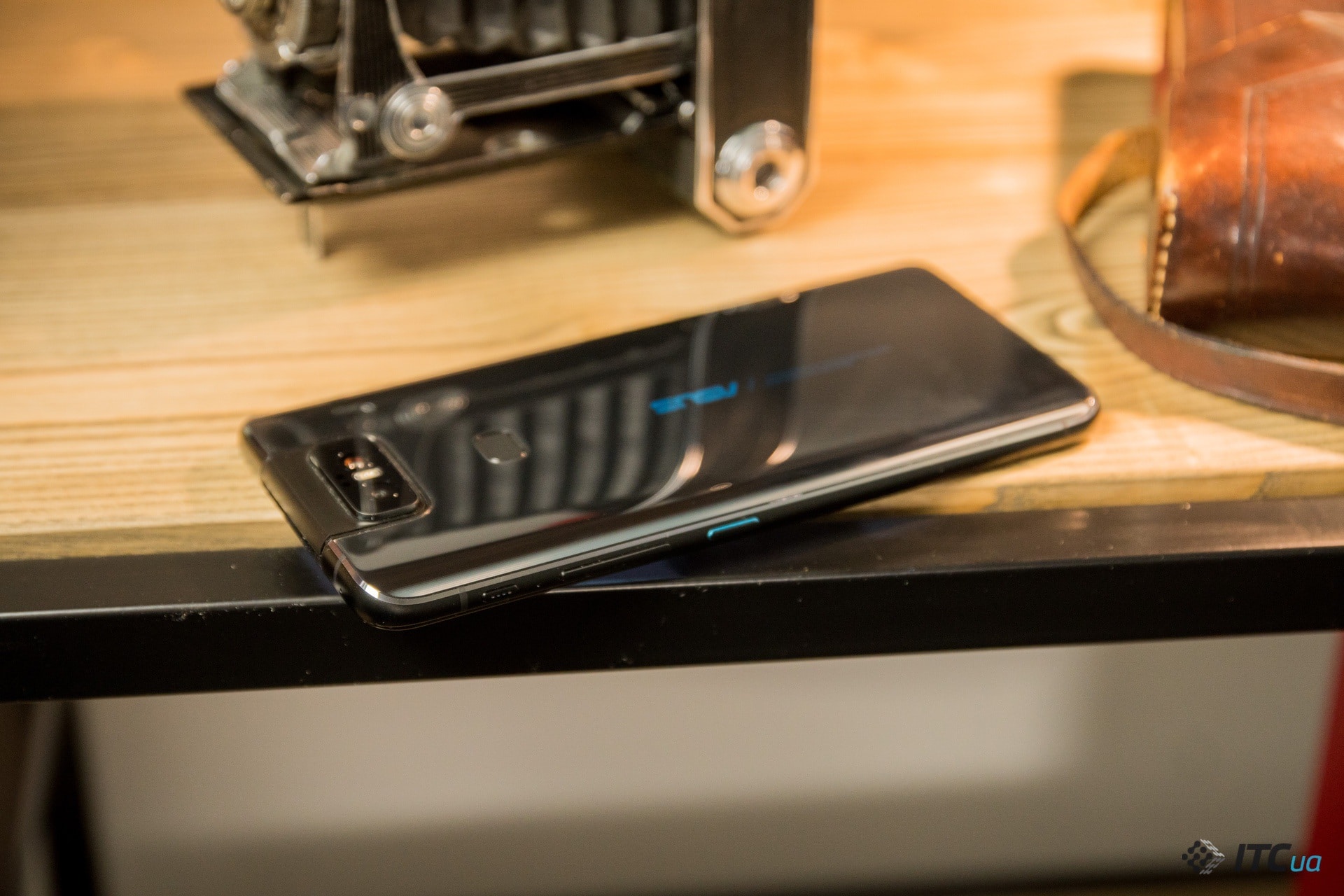
But in the settings, the user can assign other actions to it.
For example, with one click you can switch from ringtone to vibration and vice versa, double-click to turn on the flashlight, and with a long press, take a screenshot of the screen. In practice, this turns out to be very convenient, and there are a lot of combinations that can be assigned to one button.
ZenFone 6 Cameras
With the design of the camera block, everything is already clear, let’s now look at their characteristics and how they shoot.
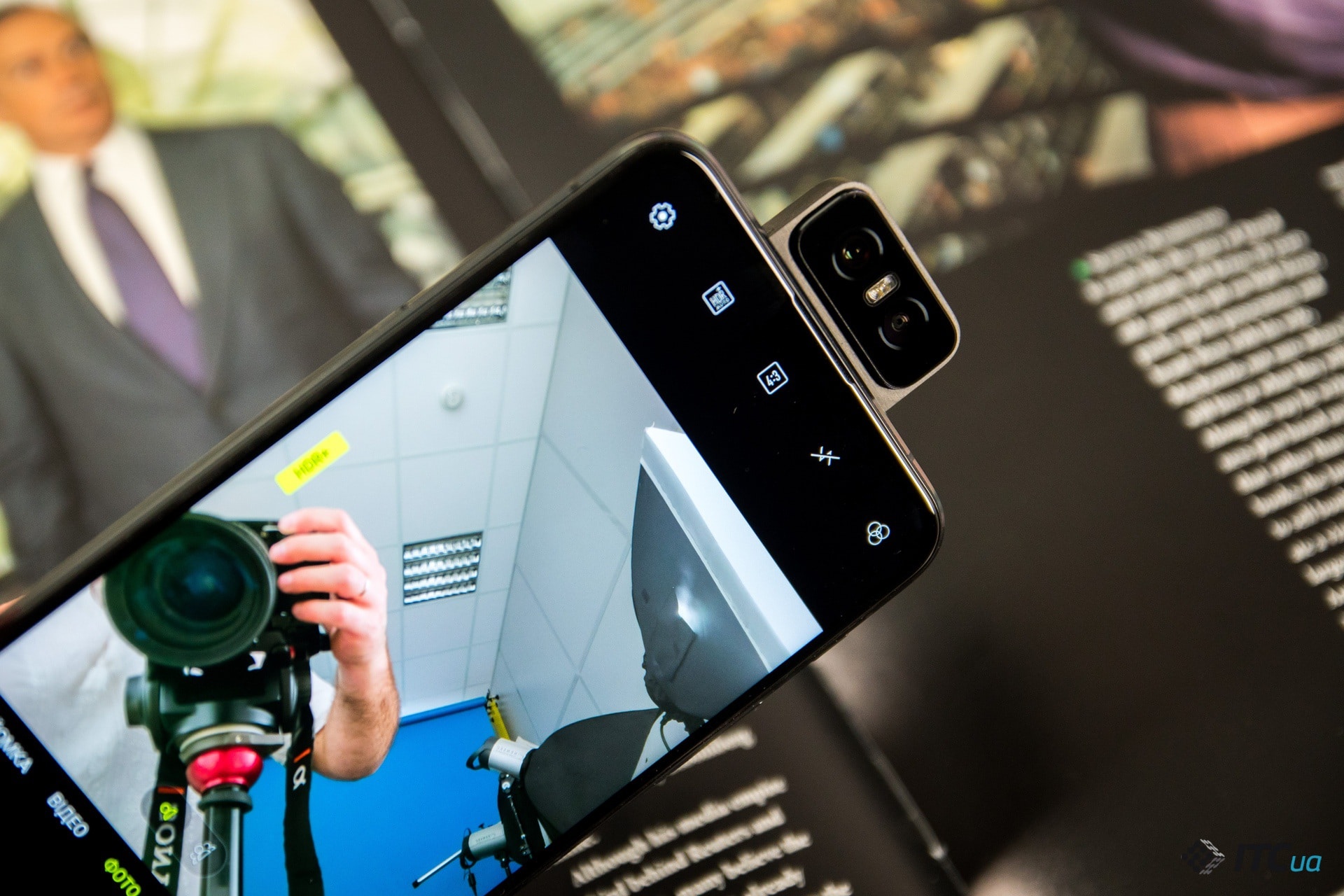
The main module in the smartphone is a 48-megapixel Sony IMX586 with f / 1.79 aperture, 1 / 2.0 ″ matrix, 3-axis electronic stabilization and a four-fold Bayer filter. The latter allows the signal processor to take the color information of the 48-megapixel camera and use it effectively to create more detailed 12-megapixel images.
During the day, the main camera as a whole really takes pictures with good detail, sometimes only overshooting with white balance.
By default, the camera shoots in HDR + mode, but you can also select HDR ++, which will make the photos more saturated.


Left photo in HDR +, right in HDR ++.
In low light, the detail of pictures from the main camera drops.
However, Night Mode comes to the rescue here, which stitches several shots together with different settings.
As a result, detail is increased, but at the same time, there is more noise.


On the left is a photo in automatic mode, on the right in night mode.
The second module in ZenFone 6 is a 13-megapixel ultra-wide angle with a 125-degree field of view and f/2.4 aperture, but without stabilization. This camera is less fast and even in the daytime the pictures on it are a little darker than on the main one. However, it copes well with its main task, allowing you to capture more of the scene. The only thing is that automation does not always fall into the correct exposure.
The aperture and lack of stabilization make the ZenFone 6’s ultra-wide-angle camera not the best option for shooting at night, a task better left to the main module.
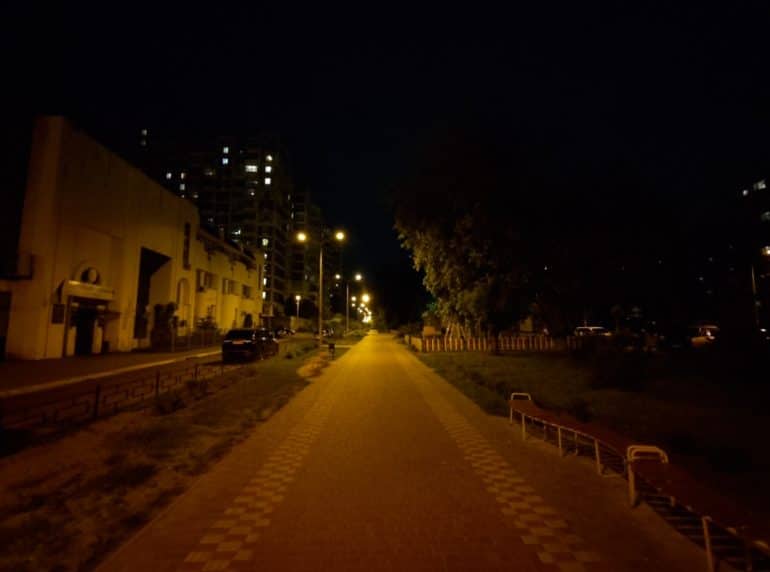

Both cameras in the smartphone can record video up to 4K resolution, but there are a number of limitations in this regard. The main module can record video in Full HD resolution until the memory runs out, but if you switch to the same resolution, only at 60 frames per second, then the recording is cut to 10 minutes. You can record video in 4K for the same amount of time, but if you select 4K resolution (60 frames per second), then the duration of the video is cut off even more – up to 2 minutes in total. Similar limitations apply to the ultra-wide-angle camera, the only thing is that it does not record 4K video at 60 frames per second. Perhaps in future firmware updates this will change, but for now it works like this.
An example of recording Full HD 60 fps video on the main camera:
An example of recording Full HD 60 fps video on an ultra wide-angle camera:
One of the benefits of the ZenFone 6’s swivel cameras is that they’re also front-facing. That is, the user gets exactly the same opportunities, respectively, everything written above applies to taking a selfie. Here I will only give an example of a portrait mode that allows you to blur the background. It works well in general, more or less correctly recognizing the boundaries of the subject, but it often eats up small details.

If you need to record yourself on video yourself, then it is better to do this with an ultra-wide-angle camera, in which case you do not have to stretch your arm far to fit in the frame.
Audio
In ZenFone 6, two external speakers are formally installed, one is located on the bottom edge of the case, and the second is combined with the speaker. But in practice, they sound different, in fact, there is only one loud speaker in the smartphone, and the second only slightly plays along with it. But it is worth noting that the lower speaker in the ZenFone 6 sounds very loud and surprisingly voluminous. It uses five magnets at once, which made it possible to increase the volume and reduce distortion. The sound of this speaker resonates well in the case, so it may seem that the entire back of the smartphone is playing. Last but not least, this is achieved thanks to the NXP TFA9874 amplifier.
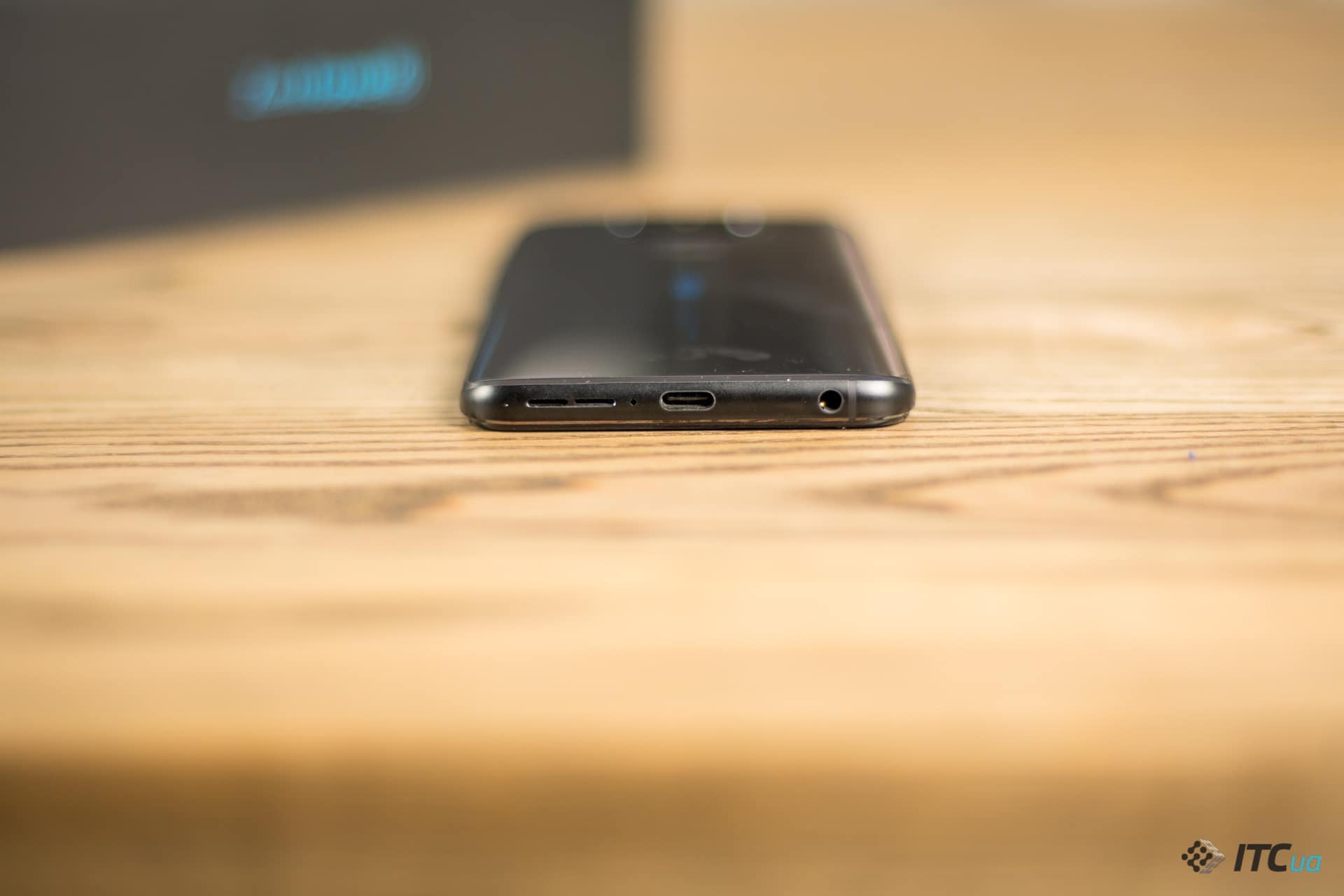
As for the sound in the headphones, in this regard, ZenFone 6 will please the owners of high-quality wired models with a 3.5 mm headphone jack and Hi-Res Audio (HRA) certification. At the same time, the complete headset from ASUS has the same certification, and it is worth noting that it sounds really good. At least, it is much better than the vast majority of headphones that come with smartphones.
Wireless headphones can be connected to ZenFone 6 via Bluetooth 5.0, while aptX HD, aptX Adaptive and LDAC codecs are supported.
Autonomy ZenFone 6
The battery built into the smartphone has a capacity of 5000 mAh, which is an excellent result for a device with a thickness of 9.2 mm. In the Geekbench 4 Pro battery test at 200 cd/m2 brightness and 100% CPU usage, the ZenFone 6 ran down to 11% in just over 11 hours.
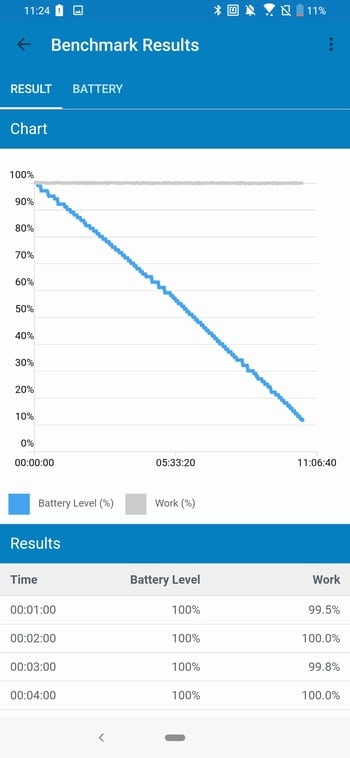
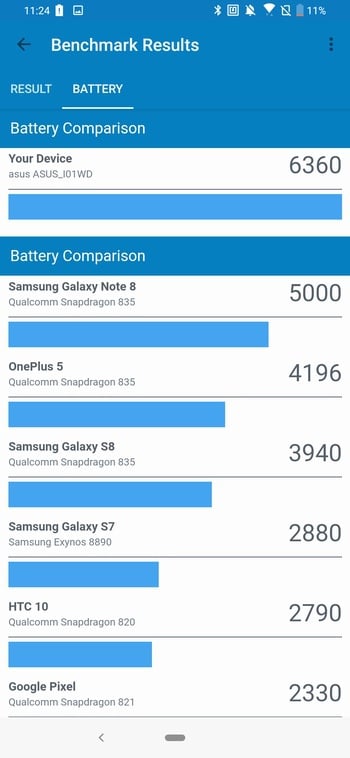
In reality, this means that even under the maximum possible load, the device will work for a working day, and in normal use, you can count on 1.5-2 days of autonomy.

Despite the capacious battery, the smartphone charges quite quickly thanks to the support of Qualcomm QuickCharge 4.0 technology. In 30 minutes, it restores the charge to 30%, in 50 minutes it charges up to 70%, but the remaining 30% takes a little more than an hour. As a result, a full charge from the supplied charger takes about two hours.
Unfortunately, there is no support for wireless charging in ZenFone 6.




